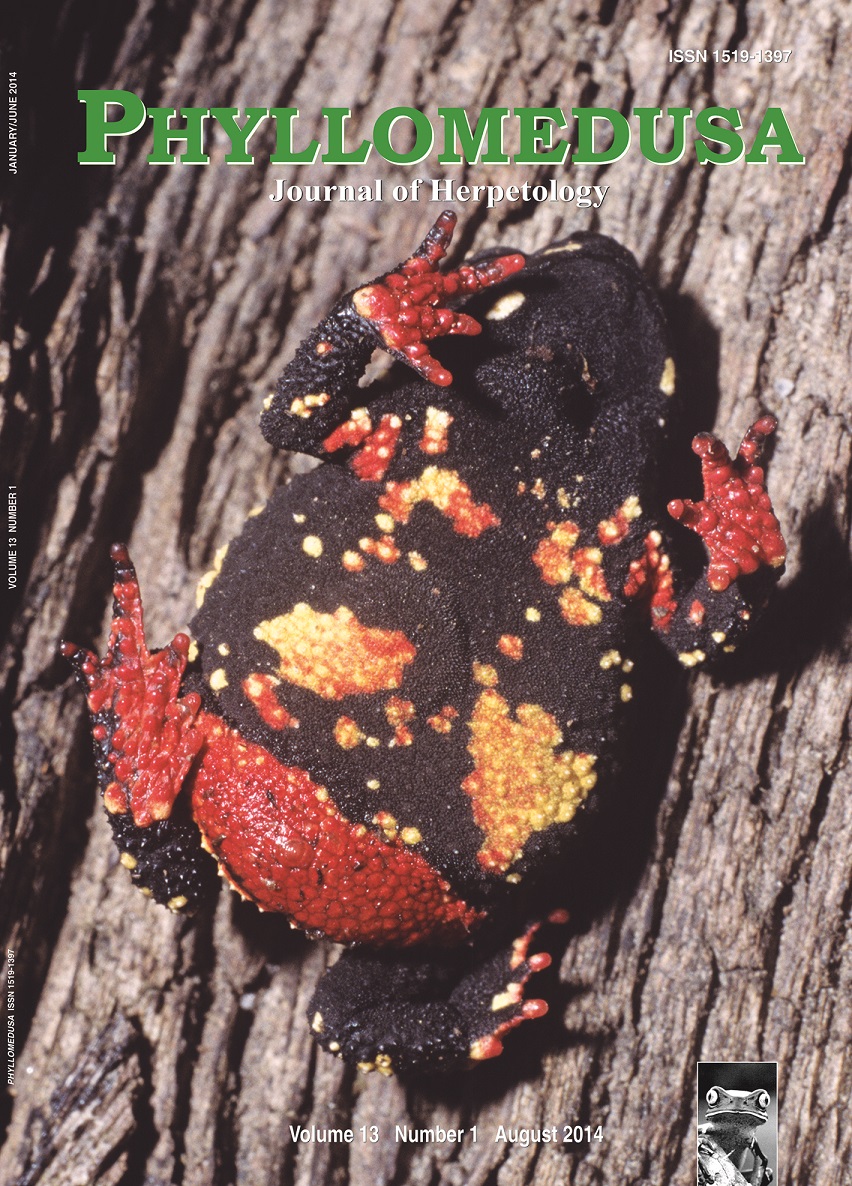Habitat heterogeneity and anuran community of an agroecosystem in the Pantanal of Brazil
DOI:
https://doi.org/10.11606/issn.2316-9079.v13i1p41-50Keywords:
agriculture, amphibians, habitat complexity, Pantanal, wetland.Abstract
The Pantanal of central Brazil has experienced considerable modifications as a result of growing land use. The association between anuran assemblage and the local habitat structure of an agroecosystem in central Brazil at the Pantanal is described. It is shown that the structure of the anuran community is reestablished within the new environmental dynamics in such human-modified habitat. Twenty-four anuran species were recorded in the area. The community was dominated by four species (Dendropsophus nanus, Leptodactylus chaquensis, Hypsiboas raniceps, and Rhinella cf. bergi), which accounted for more than 50% of the sampled individuals. The species distribution pattern was adjusted to the logarithmic, log-normal, and broken stick models, partially reflecting its association with agroecosystem characteristics. Habitat heterogeneity contributes to the anuran community at a local scale, thereby emphasizing the importance of maintaining distinct habitats for anuran species in the Pantanal as a management practice, even in in situations in which anthropic actions are predictable, as in agroecosystems.Downloads
Download data is not yet available.
Downloads
Published
2014-08-30
Issue
Section
Articles
License
All material originally published in Phyllomedusa belongs to Escola Superior de Agricultura Luiz de Queiroz - Universidade de São Paulo. All contents are under a license of Creative Commons BY-NC-ND.How to Cite
Souza, F. L., Martins, F. I., & Raizer, J. (2014). Habitat heterogeneity and anuran community of an agroecosystem in the Pantanal of Brazil. Phyllomedusa: Journal of Herpetology, 13(1), 41-50. https://doi.org/10.11606/issn.2316-9079.v13i1p41-50



 Impact Factor (JCR): 0.600
Impact Factor (JCR): 0.600 CiteScore: 1.0
CiteScore: 1.0